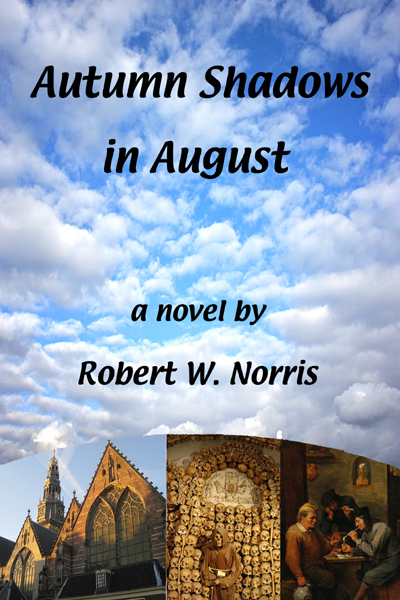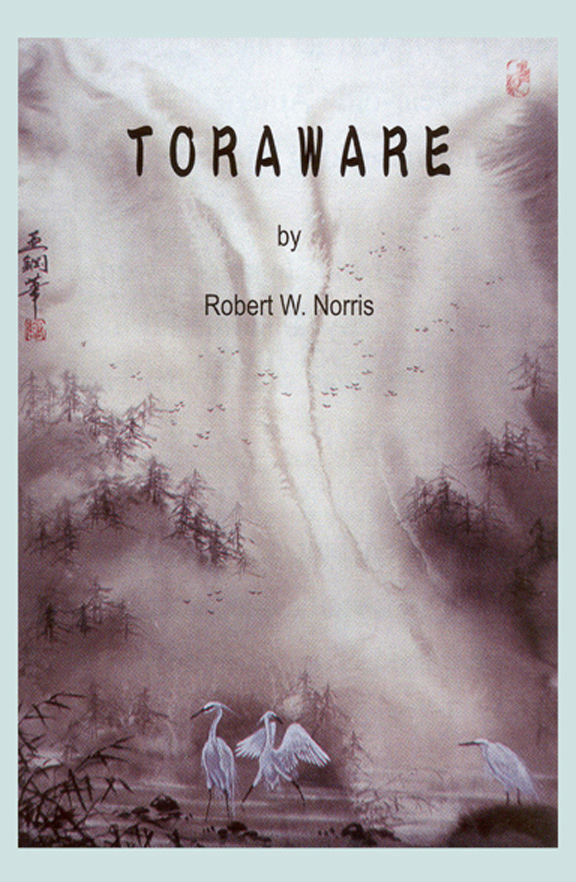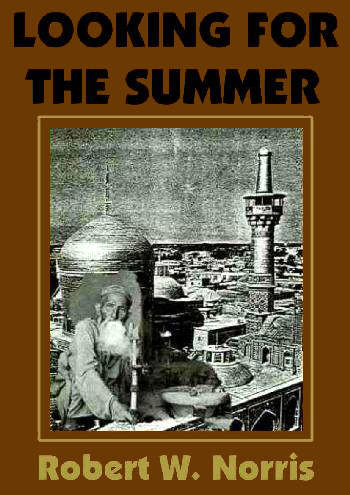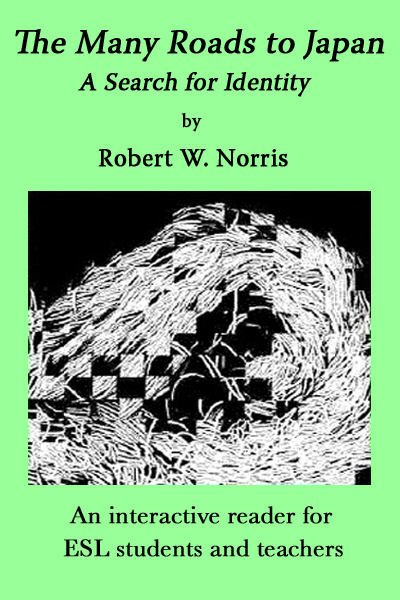
Home About Robert CV The Good Lord Willing and the Creek Don't Rise: Pentimento Memories of Mom and Me Novels Reviews ESL Papers (can be viewed online by clicking on titles) The Many Roads to Japan (free online version for ESL/EFL teachers and students) Contact     |
Civilian Public Service Conscientious
Objectors in World War II
Robert W. Norris
2000. In Studies in Comparative Culture, No. 49
Introduction
World War II, for many Americans, is seen as a “good” war, one that was necessary, just, and supported by nearly the entire country. A small but significant number, however, said "no" to this war. Of the nearly 12 million men drafted by the Selective Service System (SSS) during the war, over 72,000 filed to be classified as conscientious objectors (COs) and exempted from military service.1 Those who claimed conscientious objector status were dealt with mainly in three ways. One group of about 25,000 COs who would not carry a weapon but were willing to perform non-combatant duties (e.g., working as clerks or medics in the armed forces) was assigned to military units. Another group was comprised of COs whose consciences would not allow them to participate in the military in any way. These “absolutist” COs numbered around 6,000 (three-quarters of whom were Jehovah’s Witnesses) and ended up in prison. The third group was those COs found to be sincere in their religious beliefs.2 They were required to do "work of national importance" under civilian direction. This program became known as Civilian Public Service (CPS). Members of this group were sent to forestry camps, mental hospitals, farms, medical and health experiment centers, and a wide variety of other civilian work projects. About 12,000 men served in CPS. The focus of this paper is on the CPS group. The contents of the paper include:
Historical Background
Conscientious objection came to America with the immigration of members of historic peace churches, which early on included Mennonites, Quakers, and Anabaptists, and later in the early eighteenth century the Church of the Brethren.3 Quakers first arrived in 1656 from England.4 Anabaptist immigration followed. Dutch and German Mennonites arrived as early as 1683.5 These pacifist sects immigrated to America not only in search of religious freedom, but also to avoid the problem of military service in Europe. In America, they faced a different form of service in the militia. Each colonial town and city recruited its adult males for regular drills and further service as the need arose. The local militias were subordinate to the colony, and later to the states. All of America’s early wars, from the French-Indian War to the American Revolutionary War and the War of 1812, were fought by militias. Members of the pacifist sects were opposed to military service of any kind, so they inevitably ran into trouble with local militia officials. The first record of conflict between pacifists and militias dates back to 1658.6 Official punishments included fines, imprisonment, and forced service. During the American Revolutionary War, military matters still remained a local issue. Some states, notably Rhode Island, North Carolina, and Massachusetts, treated COs favorably; others, including Pennsylvania, were hostile to objectors.7 Fines and taxes were often required of a CO in place of military service, and there were cases of COs being beaten for their refusal to fight.8 James Madison, one of the framers of the U.S. Constitution, proposed an amendment that would exempt religious objectors from military service.9 The measure passed the House of Representatives, but failed in the Senate. The failure to enact a federal CO provision did not stop the members of the historic peace churches. They lobbied each new state as it entered the Union, and many states had conscientious objector clauses written into their state constitutions. In nearly every case, the pacifist was required to pay a fine in lieu of military service.10 State militia laws remained in effect through the first years of the Civil War. In many cases, men were exempted from service if they hired a substitute or paid a fine. The Civil War brought the nation’s first mass conscription and the first federal recognition of conscientious objection. The Federal Militia Act of 1863 provided no specific clause relating to conscientious objection; however, it did provide for exemption from service upon payment of a fine.11 The 1864 amendment to this act provided that COs be drafted as non-combatants and assigned to duty in hospitals, or pay a fine.12 In any case, only members of the historic peace churches were eligible. World War I also required the conscription of America’s young men into its army. The 1917 draft act provided that members "of any well-recognized religious sect...whose existing creed or principles forbid its members to participate in war in any form" would be exempted from service in any combat arm, but not relieved from serving "in any capacity that the President shall declare to be non-combatant."13 The wording of the act again excluded all but members of historic peace churches. Neither Congress nor the Selective Service defined which religious groups it intended to exempt. This provided considerable administrative difficulties, some of which were resolved when President Woodrow Wilson issued an order classifying as COs those sincere objectors who could not gain proof of affiliation with an historic peace church.14 Although the presidential order allowed for non-religious objection, in practice such objectors were rare. Of over 2.8 million World War I draftees, claimants for non-combatant status numbered 64,693. Of the 56,830 who were finally recognized, 29,579 were found qualified for military service, and 20,873 were eventually inducted for non-combatant military service.15 From the military’s perspective, more problematic were those who conscientiously opposed even non-combatant military service. They often suffered harsh treatment at military training bases, and of 504 men who were brought before courts-martial, 450 received a sentence. The penalties ranged from death (17 men) to terms of imprisonment averaging sixteen and a half years.16 Secretary of War Newton D. Baker, on June 1, 1918, created the Board of Inquiry (BOI) to investigate the situation of COs who refused to accept military authority. The BOI recommended that "sincere" COs be allowed to work under civilian direction. About 1,500 COs were assigned to do agricultural work and another 88 were granted permission to work in the European reconstruction unit of the American Friends Service Committee (AFSC), a Quaker group.17 The war’s end brought a reduction of the courts-martial sentences imposed on COs. None of the death sentences was carried out, and the last military prisoner was released two years after the armistice.18 World War I had created close bonds among the main historic peace churches. This relationship continued into the postwar period and deepened by the mid-1930s as the threat of another world war became stronger. In 1935 Mennonites met in Indiana to discuss the question of conscientious objection in wartime.19 Later that year, 80 representatives of the historic peace churches gathered in Kansas and began exploring conscientious alternatives to military service. What they hoped to design was a program, administered by civilians, that would provide alternative service similar to the AFSC work camps. Such a program would offer their young men a more desirable option than prison or non-combatant military service. The outbreak of war in Europe in September 1939 brought a sense of urgency to the peace churches’ concern about conscientious objection. A delegation from the historic peace churches met with President Franklin D. Roosevelt on Jan. 10, 1940 to convey their commitment to alternative service.20 There was much debate in Congress concerning the enactment of a new draft law and what should be done with COs. The Selective Training and Service Act of 1940, signed into law by President Roosevelt on September 16, had an improved CO provision compared with the 1917 draft act, but it did not include any protection for "absolutist" objectors. It did, however, broaden eligibility for CO status beyond membership in the historic peace churches. Now eligible were those who "by reason of religious training and belief" were "conscientiously opposed to participation in war in any form."21 Also, the new draft act made provision for those opposed to non-combatant military service by allowing them to be assigned "to work of national importance under civilian direction."22 The act gave no guidance on how such a program should be organized and administered. The arrangements that eventually emerged represented a convergence of interests between the Selective Service System and the historic peace churches. Government agencies would provide camp sites and equipment, but the historic peace churches would have to supply generally all things necessary for the care and maintenance of the men. This was the beginning of the CPS, which ran from May 15, 1941 to March 31, 1947. Religious Backgrounds
of CPS Members
CPS men were drawn from over 200 different sects and denominations, but the majority came from the historic peace churches, with the Mennonites composing 39%, the Brethren 11%, and the Quakers 7%.23 The rest represented mainstream denominations, dozens of sects, those nominally affiliated with organized churches, and atheists. In particular, Mennonites and Brethren were usually expected by their families and churches to choose to be COs.24 Strong religious teachings at home or at local churches persuaded many men not affiliated with the historic peace churches to become pacifists. Novels such as Erich Remarque's All Quiet on the Western Front (1929), stories of atrocities in World War I, and revelations about the use of wartime propaganda strengthened the pacifist beliefs of many. The philosophies of Leo Tolstoy, Henry David Thoreau, and Mohandas Gandhi helped convince others to become COs. Some men were part of 1930s peace movements and members of such organizations as the Fellowship of Reconciliation and the War Resisters League that had been formed in response to their disillusionment with war as a means of resolving international conflicts.25 The Kind of Work26
The early CPS camps utilized isolated Civilian Conservation Corps (CCC) facilities.27 The government's intention was to remove and protect assignees from society. CPS men engaged in soil conservation work, forestry service, and tree nursery projects under the supervision of the U.S. Forest Service, the Soil Conservation Service, and the National Parks Service. After work, many CPS units conducted Bible classes, planned future relief and reconstruction projects, and generated a wide variety of discussion groups. The men also played sports, wrote camp newsletters and literary magazines, and put on theatrical productions. Church agencies attempted to create a religious environment, and pacifist leaders visited the various camps and gave lectures. As the war intensified, many CPS men began to question the nature of the work they had to do. Weeding seedling beds and clearing brush along trails in national parks did not seem to them a significant contribution to the welfare of the country while others were sacrificing their lives in the military. The National Service Board of Religious Objectors (NSBRO), an eight-member council representing the historic peace churches, began to lobby the Selective Service for meaningful work projects, but the government feared public criticism if COs left the isolated CCC camps for more visible jobs. A compromise was reached where COs could be assigned as attendants in state mental hospitals and training schools. The government believed that not only was the work socially useful, but it would continue to keep COs isolated from the public. Other CPS men volunteered to serve as human guinea pigs in medical experiments. The Office of Scientific Research and Development and the Office of the Surgeon General of the Army had initiated a variety of research and experimental programs designed to stave off the wartime threat of pandemic disease. Projects studying typhus, pneumonia, hepatitis, malaria, starvation, and other diseases were in need of human subjects. For many of the CPS members, these research programs offered a chance to put their beliefs against killing into practice. Much of the country saw the COs as cowards. By volunteering to be human guinea pigs in dangerous experimental research, the COs could demonstrate their commitment to nonviolence in a way that put them at risk but did not violate their pacifist principles. COs also served as farm laborers and dairy herd testers, built toilets for Florida communities plagued with hookworm, and provided health and educational services in Puerto Rico and the American Virgin Islands. Men looking for adventure and the chance to demonstrate their bravery worked as firefighters who parachuted into rugged, mountainous areas to put out forest fires. Problems
There were many problems, frustrations, and difficulties associated with the CPS camps. The biggest problem was the conflict between the historic peace churches and the SSS. In the beginning, it was agreed that government agencies would make available camp sites and equipment, but the NSBRO would bear the financial and supervisory responsibilities of the program for an initial six-month period. As it turned out, however, this arrangement was extended for the duration of the war and the historic peace churches had little control over the CPS program.28 Originally, the CPS COs were supposed to spend one year in the camps. This was extended to 18 months in August 1941, then, after Pearl Harbor, continued until six months after the war ended. Initial idealism faded as years went by with no pay, no dependency allowances, no medical insurance, and no workman's compensation. This arrangement even led the American Civil Liberties Union to denounce the camps by accusing the government of placing COs beneath prisoners of war, convicts, and enemy aliens because those groups were paid for their forced labor.29 Interpretation of what constituted "work of national importance" led to many frustrations. Many CPS men balked at being employed in inefficient and wasteful projects that did not take advantage of their skills and abilities. The CPS men had above average education levels, prewar work experience, and high motivation at the beginning of the program. One CPS man reflected years later that the real tragedy of the CPS work program was the "foolish waste of talent, as the prejudices of government bureaucrats compromised their ability to make optimum use of the skills they had available to them."30 COs from the historic peace churches generally had moral support from their families, friends, and communities, but for many other COs there was little support and much ostracism.31 The wives of CPS members experienced special difficulties. Some did not share their husbands' pacifist commitment and were frustrated by the fact their husbands were not serving in the military. Unlike their husbands, these women were not hidden away from the general public. They had no protection against discrimination or harassment. Since they had no dependency allotment, many were forced to live with their often disapproving families or in-laws. Most women worked to support themselves and their children, but finding a job was frequently difficult. Some teachers were fired when their school systems learned of their CO husbands, and others had their applications rejected.32 The Return to Society33
After the war, CPS men returned to society and entered nearly every trade, business, and profession. The majority of these COs, however, avoided activities or companies with military affiliations. One man gave up flying because he could not obtain flight training without participation by the military. Another turned down a lucrative position as a National Coordinator of Disaster Studies when he found out the studies were financed by the Pentagon for the purpose of how best to produce panic in enemy civilian populations. Some quit university teaching jobs when they failed to persuade the administration not to install a Reserve Officers Training Corps unit. There were instances in which COs were discriminated against, but also many other instances when having stood firmly for their convictions gave them an advantage. Not surprisingly, many COs chose professions in which moral, religious, philosophical, and social values were more important than material rewards. A great many devoted their lives to careers in the fields of education, health care, the ministry, social service, agriculture, journalism, and the environment. Influence on
Subsequent Generations
After the war, the churches from which CPS COs came and to which they returned were affected significantly. Fundamentalist churches, which had been historically wary of psychiatry and therapy, had members returning from work in mental institutions who had seen the uses of psychiatric care. These churches were forced to look at psychiatry and therapy in a new light. Catholics who had been in the CPS would eventually lead a debate in the Catholic Church that brought the issues of peace and disarmament to the forefront in the 1960s and 1970s. All the historic peace churches inherited a generation of leadership from the ranks of the CPS.34 Perhaps the biggest influence on subsequent generations came during the Vietnam War, when antiwar sentiment reached a peak in the U.S. Many CPS men served as draft counselors during the Vietnam War. During World War II there were 15 COs for every 10,000 inductions into the military, or 0.15%. As the war in Vietnam heated up, and as opposition to it intensified, the number of COs grew rapidly. In 1968, the percentage of COs per number of inductions rose to 8.5%. In 1969, it reached 13.5%; in 1970, 25.6%; and in 1971, 42.6%. In 1972, with the phasing down of American forces in Vietnam and the winding down of the draft, for the first time in history more men were classified as COs than those inducted: 33,041 to 25,273.35 Also, during the Vietnam War, a Supreme Court decision was made in which the basis for being able to claim CO status was expanded from only reasons of religious training and background to include reasons of moral and philosophical training and background. The pacifist tradition and idealism that led men into CPS in World War II has not died; rather, it has taken on a global significance. Organized nonviolent action has demonstrated enormous power for peaceful change. Some examples include:
NOTES 1. Richard C. Anderson, Peace
Was
in Their Hearts (Scottdale, Pennsylvania: Herald
Press, 1994), 2. The Selective Service Act of 1940 provided for the creation of a decentralized system of local draft boards, with state and national appeal boards. Although policy was determined nationally, virtually all decisions regarding CO applicants' sincerity, draft status, and deferments were made by nearly 4,000 local draft boards. These boards consisted of at least three members, each appointed for life. Ideally, they were members of the community over which the board had jurisdiction, but this was not always the case. While some draft boards judged each case according to the rules, others simply did not grant CO deferments. In case an applicant did not receive the classification he had desired, there was a system of local and national appeal boards. 3. Charles C. Moskos and John Whiteclay Chambers II, The New Conscientious Objection: From Sacred to Secular Resistance (New York: Oxford University Press, 1993), 25. 4. Lillian Schlissel, Conscience in America: A Documentary History of Conscientious Objection in America, 1757-1967 (New York: Dutton, 1968), 17. 5. Karl D. Nelson, "By Reason of Religious Training and Belief: A History of Conscientious Objection and Religion during the Vietnam War," <http://members.macconnect.com/~knelson/co/co.html>, 1998 (Accessed Feb. 5, 2000). 6. Moskos and Chambers, 25. 7. Richard Wilson Renner, "Conscientious Objection and the Federal Government, 1787-1792," Military Affairs 38, No. 4 , 1974, 142. 8. Moskos and Chambers, 28. 9. "The right of the people to keep and bear arms shall not be infringed; a well armed and well regulated militia being the best security of a free country: but no person religiously scrupulous of bearing arms shall be compelled to render military service in person." James Madison, Proposals to the Congress for a Bill of Rights, 1789, Annals of Congress: The Debates and Proceedings in the Congress of the United States, Vol. I, First Congress, First Session, June, 1789 (Washington, D.C.: Gales and Seaton, 1834), 431-42. Cited in Schlissel, 47. 10. Schlissel, 57. The Indiana Constitution of 1851 read: "No person conscientiously opposed to bearing arms shall be compelled to do militia duty; but such person shall pay an equivalent for exemption; the amount to be proscribed by law." Article XII, Section 6 of the Indiana Constitution of 1851. Cited in Edward Needles Wright, Conscientious Objectors in the Civil War (Philadelphia: University of Pennsylvania Press, 1931), 39. 11. Federal Militia Act of 1863, Statutes at Large 12 (1863), 731. Cited in Nelson, 1998. 12. Federal Militia Act of 1864, Statutes at Large 13 (1864), 6. Cited in Nelson, 1998. 13. Executive Order dated March 20, 1918. Cited in Arthur S. Link, et al, eds., The Papers of Woodrow Wilson, Vol. 47: March 13-May 12, 1918 (Princeton: Princeton University Press, 1984), 72-73. 14. Executive Order dated March 20, 1918. Cited in Link, et al, 72-73. 15. U.S. Secretary of War, Statement Concerning the Treatment of Conscientious Objectors in the Army (Washington, D.C.: Government Printing Office, 1919), 16. 16. U.S. Secretary of War, 8-9. 17. Heather T. Frazer and John O’Sullivan, We Have Just Begun to Not Fight: An Oral History of Conscientious Objectors in Civilian Public Service During World War II (New York: Twayne Publishers, 1996), xiv. 18. Frazer and O’Sullivan, xiv. 19. Frazer and O’Sullivan, xv. 20. Frazer and O’Sullivan, xv. 21. The Selective Training and Service Act of 1940, Section 5(g). Cited in Anderson, 25. 22. The Selective Training and Service Act of 1940, Section 5(g). Cited in Anderson, 25. 23. Melvin Gingerich, Service for Peace: A History of Mennonite Civilian Public Service (Akron, Penn.: Mennonite Central Committee, 1949), 85. 24. Frazer and O’Sullivan, xviii-xix. 25. Frazer and O’Sullivan, xix. 26. Information in this section found in Frazer and O’Sullivan, xix-xxv. 27. The Civilian Conservation Corps was created in 1933 by President Franklin D. Roosevelt in order to help battle the economic and social problems that beset the U.S. during the Great Depression. Hundreds of thousands of unemployed young men were put to work in national forests, parks, and range lands. The CCC camps ran from 1933 to 1942. 28. Anderson, 22-42. 29. V.H. Whitney, "C.O.’s: Second-Class Citizens," Nation, Dec. 29, 1945, 736. 30. Anderson, 67. 31. Anderson, 94-107. 32. Frazer and O’Sullivan, xx. 33. Information in this section found in Anderson, 175-212 34. Frazer and O’Sullivan, 247. 35. Frazer and O’Sullivan, 247. 36. Glenn Paige, "Gandhi’s Contribution to Global Nonviolent Awakening," Amnesty International, 1988, 152. |